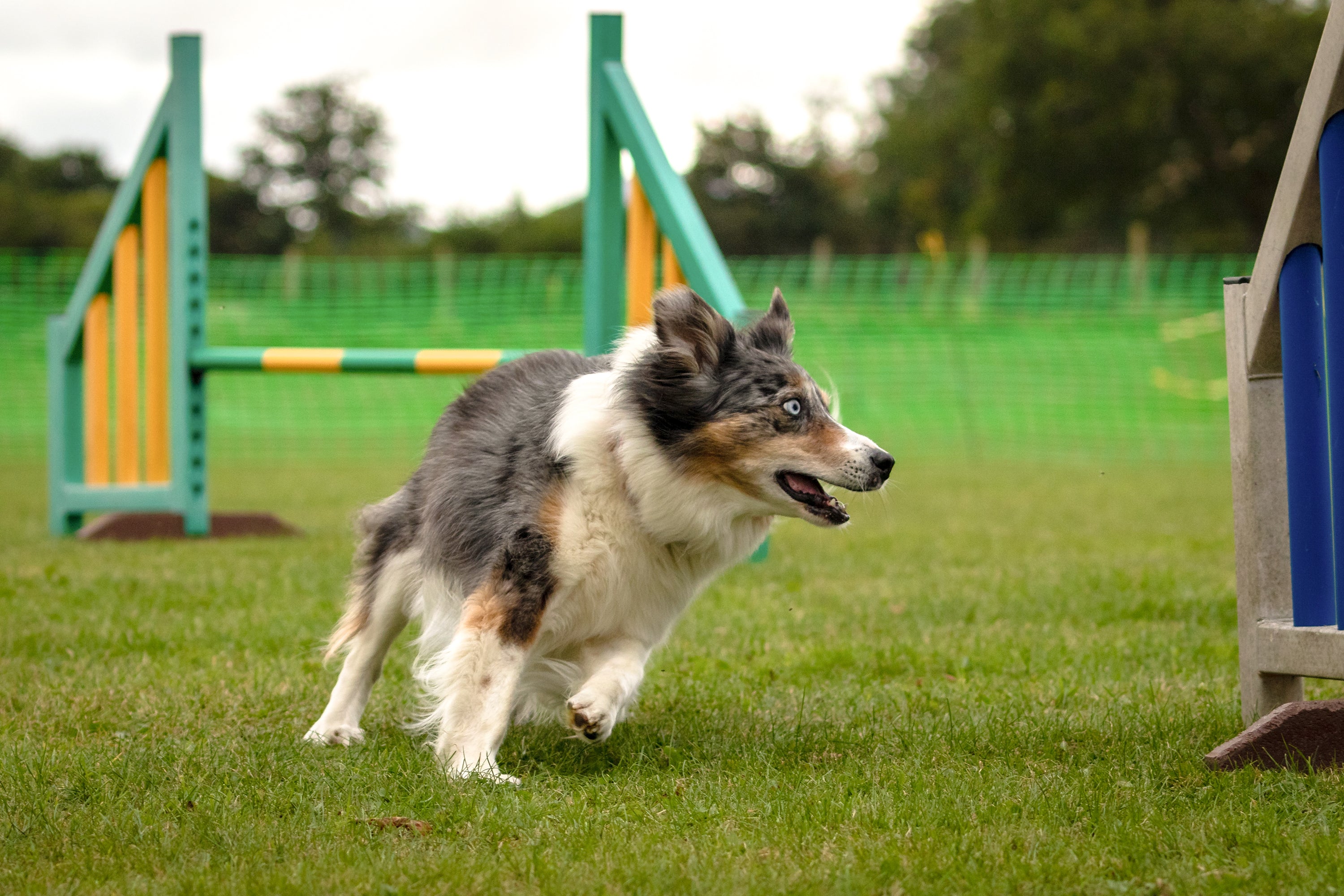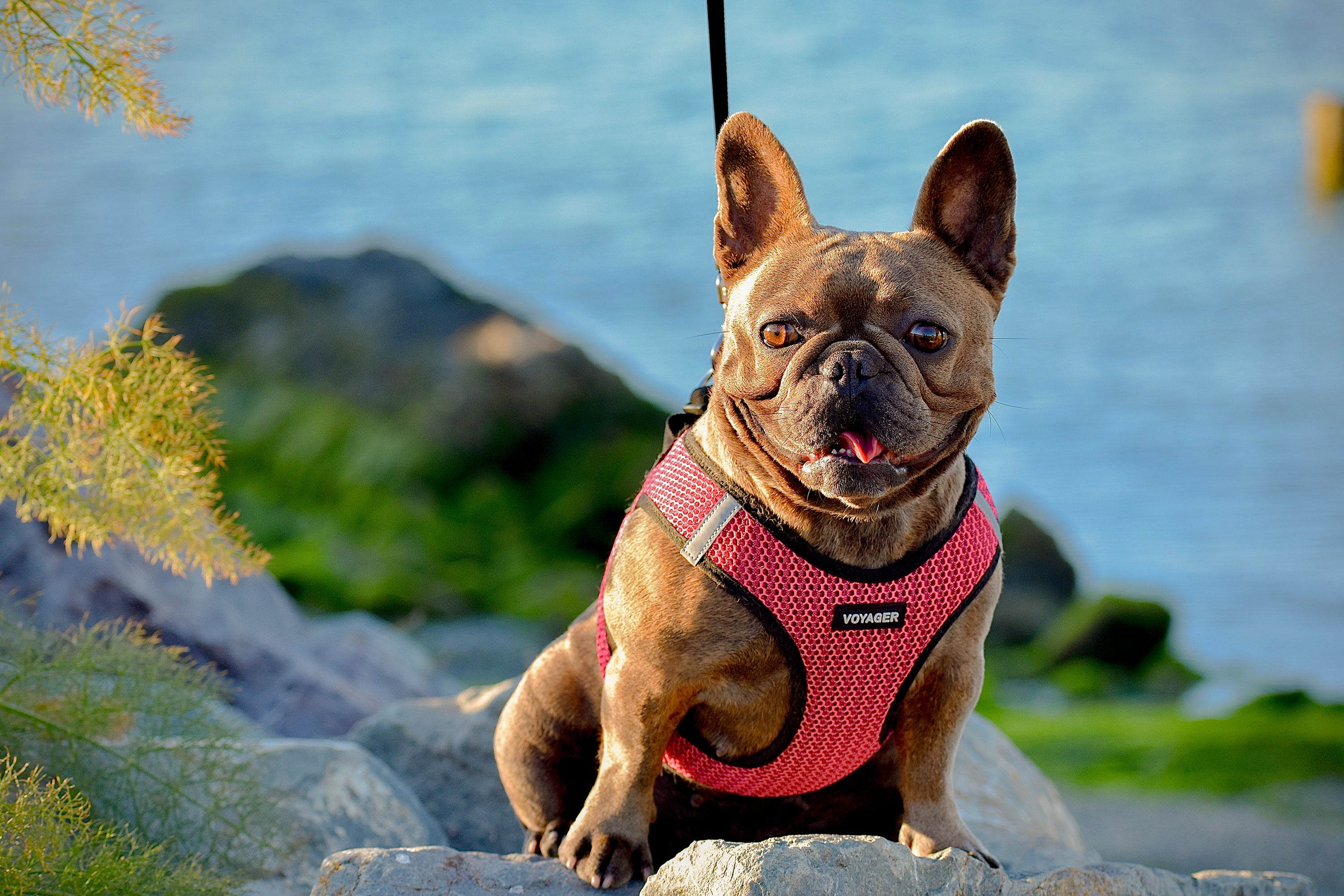J
ust like humans, our pets thrive on physical activity and mental stimulation. Regular exercise is essential for their well-being, and as responsible pet owners, it's our duty to make sure they get the training they need.
In the following guide, we'll dive deeper into creative dog exercises and ways to keep your pet active. We'll explore physical therapy, balance and weight training techniques, and various mental stimulation methods, all of which contribute to a happier and healthier canine companion

Physical Therapy Exercises
Physical therapy exercises can significantly benefit dogs of all ages, especially those recovering from injuries or suffering from joint issues. These exercises can improve mobility, relieve pain, and prevent discomfort in the future. Here's a closer look at some dog physical therapy exercises:
Hydrotherapy
Swimming is an exceptional, low-impact exercise for dogs. It's particularly beneficial for dogs with arthritis. Consider enrolling your dog in a hydrotherapy session, or if you have access to a pool, supervise them during a swim to ensure their safety.

Passive Range of Motion (PROM) Exercises
Gently moving your dog's limbs through their full range of motion can help improve joint flexibility and reduce stiffness. Consult a veterinarian or a certified canine physical therapist to learn the proper techniques for your dog's specific needs.
Stretching Exercises
Like your average person, dogs can immediately benefit from gentle stretching exercises. Incorporate daily stretches into your dog's routine to maintain their flexibility and prevent muscle tightness.
Balance Training
Balance training is a versatile way to improve your dog's physical fitness and cognitive abilities. It enhances their awareness of their body in space and strengthens core muscles. Here are some methods when it comes to balance training for dogs that you can utilize:
Balance Boards
Invest in a balance board designed for dogs, or create your own using a sturdy wood plank. Encourage your dog to stand on it, and as they become more confident, you can introduce slight movements to challenge their balance further. The wobbling motion forces your dog to engage their core muscles to maintain balance, offering an excellent workout.
Agility Courses
Setting up an agility course in your backyard or visiting a local dog park can be both fun and physically stimulating for your dog. Jumping through hoops, weaving between poles, and climbing over obstacles all challenge your dog's coordination and agility.

Weight Training
While you shouldn't overload your dog with heavy weights, canine-specific weight vests can effectively add resistance to their workouts. Dog weight training vests are designed to distribute pressure evenly and safely across your dog's body. The added resistance helps build muscle strength and endurance over time.
When using weight vests, start with lighter weights and gradually increase the load as your dog becomes more accustomed to the exercise. Always monitor your dog's comfort level and consult your veterinarian if you have any concerns.
Mental Stimulation
In addition to physical exercise, mental stimulation is vital for your dog's well-being. Boredom can lead to behavioral problems, so engaging your dog's mind is crucial. Even from an early age, mental stimulation for puppies can go a long way. Here are some of our favorite ways to get their gears going:
Puzzle Toys
Puzzle toys that dispense treats or food when your dog solves a puzzle are an excellent choice. These toys challenge your dog's problem-solving skills and keep them engaged for extended periods.
Training Sessions
Regular training sessions are a fantastic way to stimulate your dog mentally. Teach them new tricks, reinforce basic commands, or work on obedience training. The mental effort involved can be just as tiring as physical exercise.
Hide and Seek
Dogs have a natural hunting instinct and playing hide and seek with treats or toys taps into this instinct. Hide these items around your house or yard and encourage your dog to find them for a fun and rewarding activity.

The Many Benefits of Exercise for Dogs
The advantages of exercise go far beyond just physical fitness – they contribute significantly to your dog's overall health and happiness. Below, we summarize some of the many benefits of regular exercise for our four-legged friends.
Physical Benefits
1. Maintaining a Healthy Weight: Obesity in dogs has become a significant issue, leading to a range of health problems such as diabetes, heart disease, and joint pain. Regular exercise helps your dog burn excess calories, maintaining a healthy weight. By preventing obesity, exercise can extend your dog's lifespan and enhance their quality of life.
2. Muscle Tone and Strength: Dogs need strong muscles to support their bodies and carry out everyday activities. Physical activities like running, walking, and swimming help build and tone your dog's muscles. This increased muscle mass improves their fitness level and enhances their overall strength and endurance.
3. Cardiovascular Health: Exercise increases your dog's heart rate and improves circulation, promoting cardiovascular health. A healthy heart can pump blood more efficiently, delivering oxygen and nutrients to the body's cells. A robust circulatory system contributes to better vitality and a longer life.
4. Joint Health: Dogs of all breeds and sizes can suffer from joint issues, and exercise is a critical element in maintaining joint health. Activities like walking and low-impact exercises help keep joints lubricated and reduce the risk of arthritis and other joint-related problems. It's particularly important for senior dogs to stay active to mitigate age-related joint degeneration.
5. Improved Digestion: Regular exercise encourages good digestion by stimulating food movement through your dog's digestive tract. It can help alleviate common digestive problems and contribute to gut health.
6. Enhanced Respiratory Health: As dogs engage in physical activities, they develop stronger respiratory muscles and greater lung capacity. This leads to improved respiratory health and can be particularly beneficial for breeds prone to respiratory issues.

Mental Benefits
1. Stress Reduction: Exercise triggers the release of endorphins in dogs, just as it does in humans. These "feel-good" hormones reduce stress and anxiety, promoting a sense of calm and well-being. A dog that gets regular exercise is less likely to exhibit signs of anxiety or depression.
2. Cognitive Stimulation: Many physical activities require problem-solving and decision-making, which provide mental stimulation. Navigating an agility course or searching for hidden treats engages your dog's cognitive abilities, keeping their mind sharp and alert.
3. Social Interaction: Exercise often involves opportunities for social interaction with other dogs and people. Activities like visits to dog parks or group training classes enable dogs to develop their social skills and reduce feelings of loneliness or boredom. These positive interactions can lead to a happier and more well-adjusted dog.
4. Better Bonding: Exercising with your dog fosters a stronger bond between you and your furry companion. Whether going for a hike, playing fetch, or taking a leisurely stroll, these shared experiences create positive associations and deepen your connection.
5. Reduced Behavioral Problems: Dogs who exercise adequately are less likely to engage in destructive behaviors out of boredom or excess energy. Common issues such as chewing, digging, and excessive barking often diminish when a dog is well-exercised and mentally stimulated.
6. Better Sleep: Regular exercise helps dogs sleep more soundly and deeply. A well-rested dog is happier and less prone to behavioral problems associated with sleep deprivation.
Double-coats
Double-coated dogs have incredibly thick fur that sheds a lot! Double-coated breeds have two layers of coat. The first layer is a soft undercoat that helps them regulate their body temperature. The second layer of fur is heavy, thick, and sometimes coarse to help further protect these dogs from the elements. Some breeds with double coats include Siberian Huskies, Alaskan Malamutes, German Shepherds, Corgis, Newfoundlands, and Great Pyrenees, to name a few.

Exercise Made Easy
Dogs and exercise go together like peanut butter and jelly. By incorporating physical activity and mental stimulation techniques into your dog's daily routine, you can guarantee they leads a full and satisfying life.
With dedication and creativity, you can provide your beloved canine with the happiest, healthiest existence possible.
Want to Receive the Educational Free Newsletter from Voyager Harness?
Discover All
Shop By Types of Leash
Bungee Cord Leash | Leash Handle | Leash with Traffic Handle | Lightweight Dog Leash For Easy Handling
Shop By Size
Big Dog Leashes | Medium Dog Collars For Year-Round Comfort | Small Dog Leashes: Perfect For Pups & Small Breeds | XL Dog Collars: Tailored For Large Breeds | Extra Small Dog Collars: Ensuring Comfort & Safety
Shop By Color
Black Dog Leash | Blue Dog Leash | Orange Dog Leash | Pink Dog Leash | Purple Dog Leash | Red Dog Leash
Shop By Material
Shop By Breed
Shop by Pet Need
Control Leash | Dog Collar Safety Strap | Dog Training Leash For Better Control & Discipline | Reflective Dog Collars For Enhanced Visibility
Explore More
Cat Harness & Leash For Comfort & Safety | Catify Collection | Dog Harness for Comfortable Walks | Dog Vest Harness: Ideal For Daily Adventures | GigaBite collection | Safe & Secure Dog Harness And Leash Set | Pink Dog Harness and Leash | Pomeranian Harness and Leash for Comfort and Style | Step-in Air & Leash Set | Stylish Cat Harness


